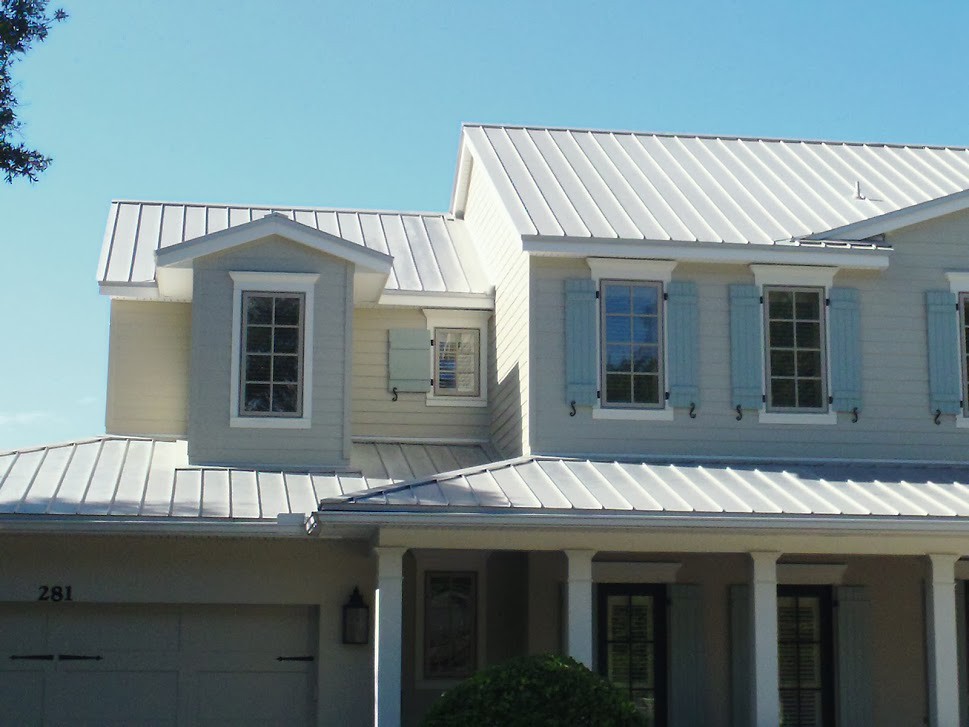 Robust and durable roofs were built to resist harsh weather conditions. Yet, no matter how strong they are, they will always be susceptible to developing leaks over time. Many factors can cause a leak, including improper installation and environmental factors. So, how can you detect these leaks when these problems cause damage and allow water to seep into your home?
Robust and durable roofs were built to resist harsh weather conditions. Yet, no matter how strong they are, they will always be susceptible to developing leaks over time. Many factors can cause a leak, including improper installation and environmental factors. So, how can you detect these leaks when these problems cause damage and allow water to seep into your home?
Searching for the Leak
One day, you notice water dripping into your room. You glance up, discovering a stain that looks like someone had splashed coffee or grease all over it. This patch of discoloration indicates a leak. In most cases like this one, water seeping into your home reveals itself noticeably. Another sign that you can watch out for is mold or mildew growth. This issue often arises from consistent moisture that signals a hidden leak you need to discover.
Time to Inspect Your Roof
Once you have identified the leak indoors, move up to the roof for a closer inspection. You want to look for visible damage, like holes, rust, or cracks. Check the seams and joints where different roofing materials meet. Inspect your roof’s flashing; this is a familiar spot for trouble. When damaged or improperly installed, water will seep in over time, leading to noticeable leaks.
Another area you want to inspect closely is the fasteners securing your metal panels. Over time, fasteners can loosen due to temperature fluctuations and allow gaps to form where water can enter. Improperly installed screws can also cause leaks. Under-driven screws fail to compress their washers completely. In contrast, over-driven screws can damage the washer or the roof panel.
Simulating a Leak
Sometimes, to pinpoint the exact location of a leak, you must create your own rainfall. Grab a garden hose, spray it on small sections of your roof, and have someone observe the interior for water penetration. While this method may sound time-consuming, it can help you pinpoint leaks that might not be visible during a standard inspection. Leaks in metal roofs can travel along the panels, meaning water entry might differ from where it manifests indoors. This issue is why systematic inspection is essential.
Check Your Roof’s Fastener
If your roof features fasteners with rubber washers, these components should be checked thoroughly. Over time, the rubber washers can degrade due to exposure to extreme temperatures, causing them to lose their sealing capability. When this happens, water can seep through even if the screws appear secure. Replacing faulty fasteners and ensuring proper installation techniques can often resolve such issues.
Your Roof Might Be Old
If no apparent damage is found, the issue may lie with aging materials. Metal roofs, while durable, can develop small fissures or cracks over years of exposure to sunlight, rain, and temperature changes. Applying a protective sealant to these areas can prevent leaks from worsening while providing additional protection against future damage.
Get a Roof Repair Expert to Help
Sometimes, the extent of the damage or the complexity of the leak’s location necessitates professional assistance. If you cannot safely access your roof, or if the problem persists despite repairs, a roofing expert can conduct a thorough evaluation and suggest appropriate solutions. Specialists have the necessary tools and expertise to conduct roof repairs effectively, ensuring the longevity of your metal roof.
How to Avoid Getting a Leak in Your Roof
Conducting regular maintenance is vital to preventing leaks. Remember to clean gutters to ensure proper water drainage. Inspect fasteners for signs of wear or improper installation and check for rust or corrosion annually to help catch potential issues early. Protective coatings designed for metal roofs can minimize weathering effects and extend the roof’s lifespan.
Conclusion
Leaks can be hard to find, but they can be detected with a thorough inspection. Remember to check your ceilings for any signs of a leak and head to your roof once you find one. If you are having difficulty finding the exact spot of the leak, get help.
When you combine careful inspection, timely repairs, and proactive maintenance, you can ensure your metal roof remains in excellent condition. These measures prevent costly water damage and preserve the roof’s aesthetic and functional qualities for years to come.






